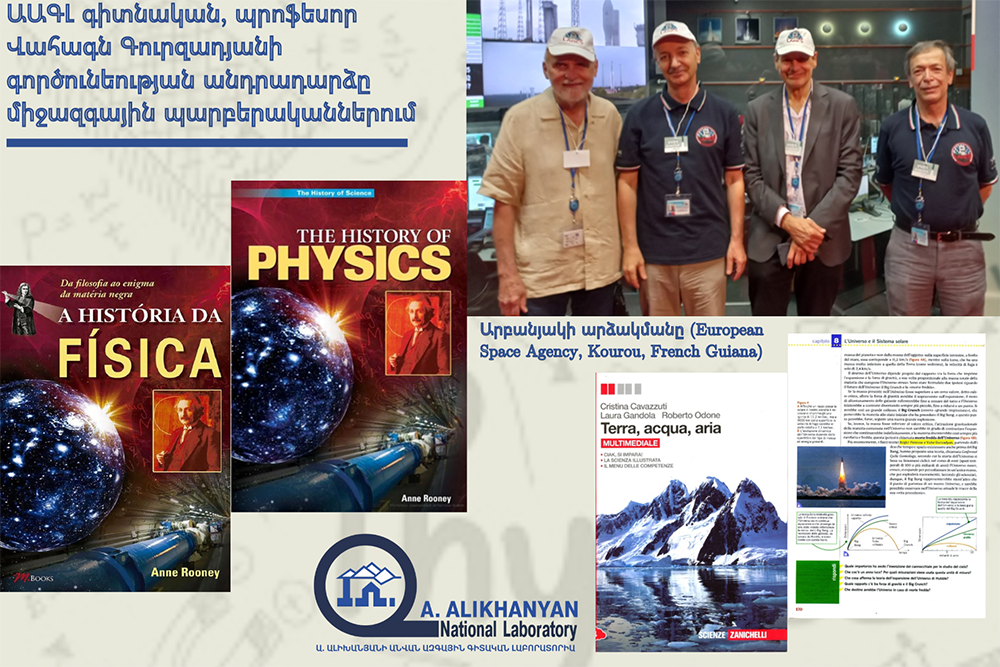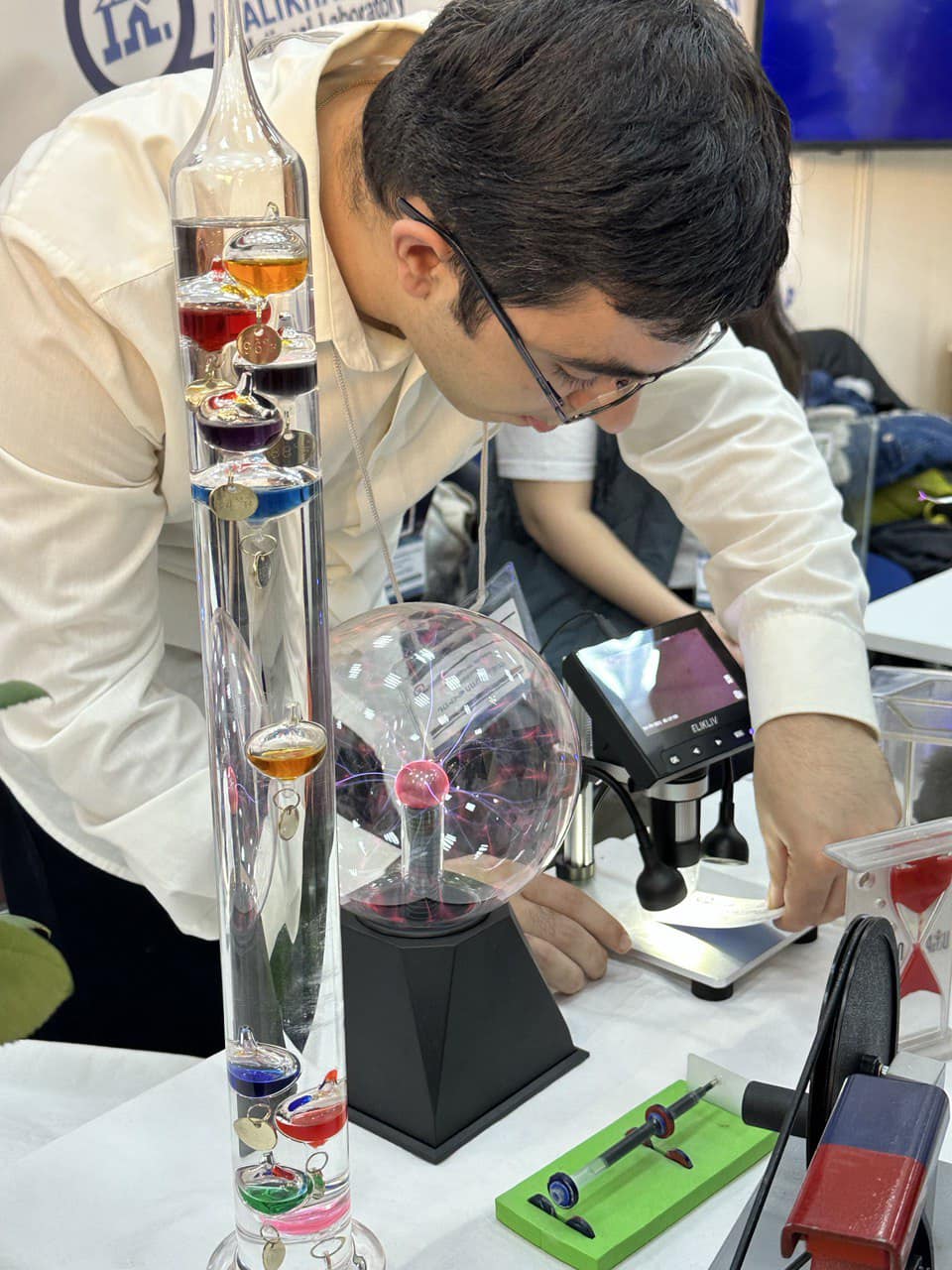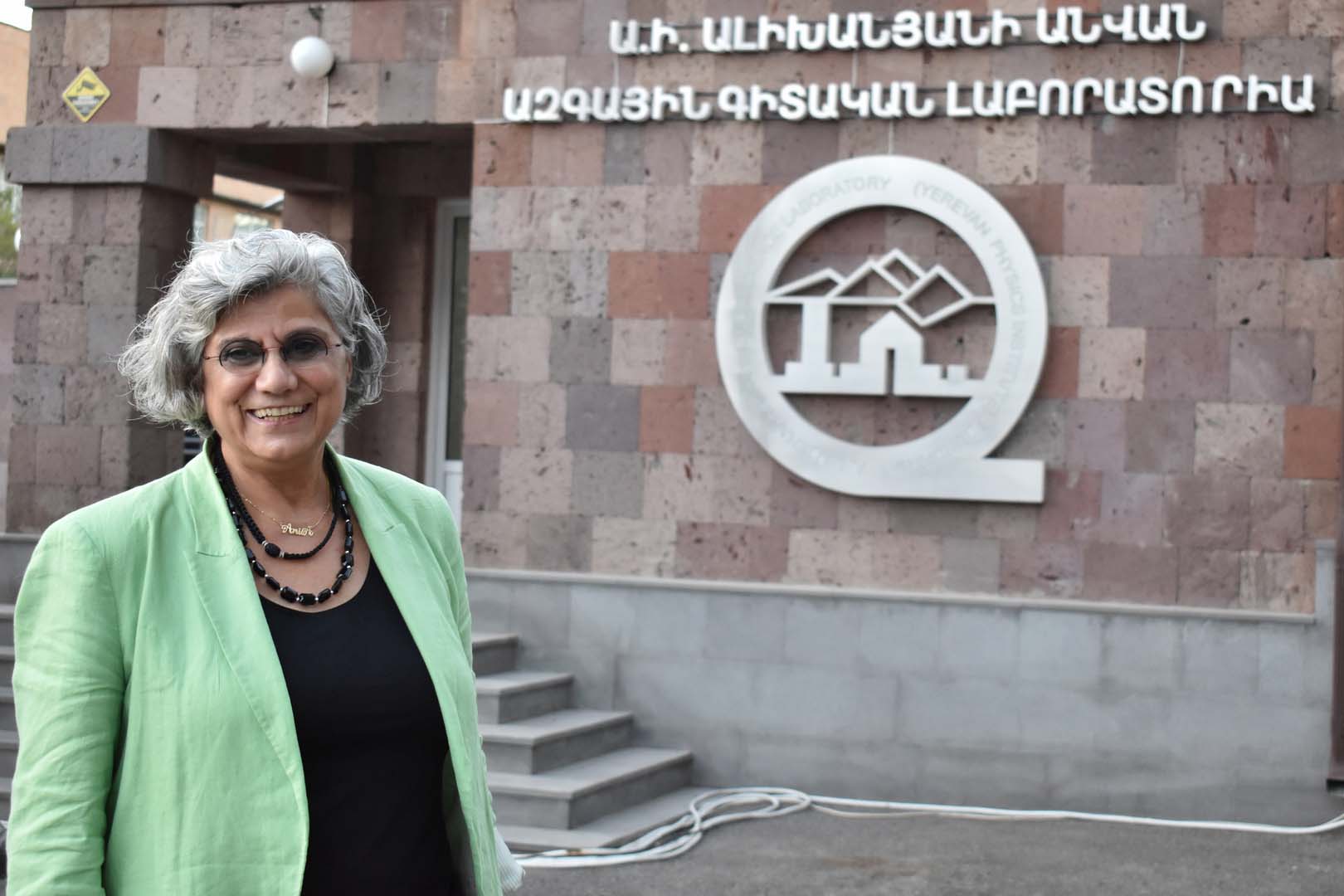AANL SCIENTISTS RESEARCH GARNERING INTERNATIONAL ATTENTION

Professor Vahagn G. Gurzadyan, Head of the AANL Center for Cosmology and Astrophysics, Editor of the European Physical Journal Plus (Springer Nature), is constantly getting high acknowledgment in international scientific periodicals and books, among which are “The History of Physics” by Anne Rooney, Italian schoolbook “Terra, acqua, aria” by Cristina Cavazzuti, Laura Gandola, Roberto Odone, and many others.
New Scientist , the influential scientific magazine to reflect the new outstanding discoveries writes in issue of August 9, 2018: “The central tenet of Einstein’s theory of special relativity – that the speed of light does not change because of the speed of the observer – has now been proved right more precisely than ever before. Vahe Gurzadyan and Amur Margaryan at Yerevan State University in Armenia used data from two experiments at the European Synchrotron Radiation Facility in France to look for signs of a changing speed of light. “Both experiments are done very accurately, monitoring a lot of systematic effects and potential sources of uncertainty,” says Gurzadyan. They found that if the two measured light speeds are different, it’s by a factor of less than seven trillionths.”
The papers by Gurzadyan and colleagues on "Inverse Compton testing of fundamental physics and the cosmic background radiation", “A new limit on the light speed isotropy from the GRAAL experiment at the ESRF" and others, are among the original sources of Wikipedia encyclopedic article Modern searches for Lorentz violation when referring to the best existing limits for the light speed invariance tests.
The Phys.Org (source: Springer) reports on the laser-ranged satellite measurement observing that now it accurately reflects Earth's tidal perturbations .Tides on Earth have a far-reaching influence, including disturbing satellites' measurements by affecting their motion. This disturbance can be studied using a model for the gravitational potential of the Earth, taking into account the fact that Earth's shape is not spherical. The article highlights the studies on the Earth's tidal perturbations acting on the satellite LARES by Vahe Gurzadyan and his colleagues, claiming that they demonstrate the value of laser-range satellites for high-precision measurements.
Science Daily notes that the most precise ever laser satellite measurement method provides new clues to relativity. Specifically, laser-ranged satellites bring increased accuracy in the study and testing of what is referred to in physics as frame dragging. In the study “On the Earth’s tidal perturbations for the LARES satellite”, the authors (V. G. Gurzadyan, I. Ciufolini, H. G. Khachatryan, S. Mirzoyan, A. Paolozzi, G. Sindoni) collect the observations of Earth's tidal perturbations acting on LARES and compare them with two similar laser-ranged satellites: LAGEOS and LAGEOS 2.
Gurzadyan theorem in cosmology, proved by Gurzadyan, states the most general functional form for the force satisfying the condition of identity of the gravity of the sphere and of a point mass located in the sphere's center. This theorem thus refers to the first statement of Isaac Newton’s shell theorem but not the second one, namely, the absence of gravitational force inside a shell. The theorem had entered, for example, in physics manual website and its importance for cosmology outlined in ongoing studies as well as in shell theorem.
In cosmology, Gurzadyan-Savvidy (GS) relaxation is a theory developed by Gurzadyan and George Savvidy to explain the relaxation over time of the dynamics of N-body gravitating systems such as star clusters and galaxies.
Gurzadyan was speaker at XXII Solvay conference on physics in 2001, as the second scholar from Armenia to participate in this celebrated conferences, after Victor Ambartsumian in 1958.
Gurzadyan has supervised 14 PhD students (2 in Italy).
More information at:
Ignazio Ciufolini, Richard Matzner, Vahe Gurzadyan and Roger Penrose
A new laser-ranged satellite for General Relativity and space geodesy: III. De Sitter effect and the LARES 2 space experiment
Gurzadyan theorem
Gurzadyan-Savvidy relaxation


.jpg)

